This guide has not yet been updated for the current season. Please keep this in mind while reading. You can see the most recently updated guides on the browse guides page
 Thank You!
Thank You!
Your votes and comments encourage our guide authors to continue
creating helpful guides for the League of Legends community.
Choose Champion Build:
-
This Build Is Troll
-
Babe Ruth Early Game
Recommended Items
Runes: Standard

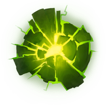
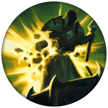
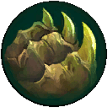
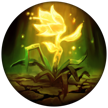






+9 Adaptive (5.4 AD or 9 AP)
+9 Adaptive (5.4 AD or 9 AP)
+6 Armor
Spells:

Flash

Ignite
Items
Threats & Synergies
 Threats
Threats
 Synergies
Synergies
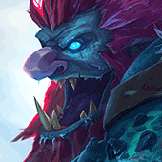 Show All
Show All
 Extreme Threats
Extreme Threats

 Ideal Synergies
Ideal Synergies

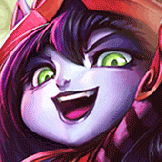
Lulu
Really annoying harass that has the potential to span half the lane, on top of an equally annoying polymorph/speed-up and shield to stop you from engaging the way you want. If neither of those work, Wild Growth can c*ckblock even harder than you can. Hard match-up both in and out of lane.

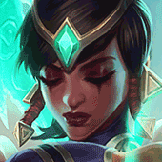
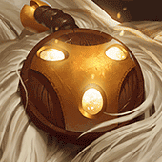
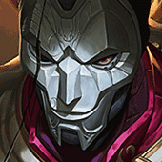
Jhin

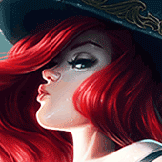
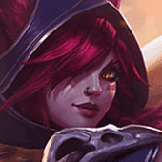
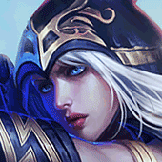
 Synergies
Synergies

Jhin




Welcome!
 (Like pretty much all of the other images in the guide, I did not make the background.)
(Like pretty much all of the other images in the guide, I did not make the background.)
making all of my dreams come true...


|
Hey everyone!!!
My name is Ahpulzz and I've been on the rift since the beginning of Season 2. Starting from Silver II, I was able to reach Diamond in Season 4 and have remained so until recently achieving Masters! In all this time, I have always enjoyed experimenting with new build paths and unique play-styles for various champions in all roles. In this guide, I want to summarize something that I picked up fairly recently and have enjoyed ever since: Support Inspired by FNC Yellowstar's support Trundle pick versus SK Gaming in their 9th week during the 2015 European Summer Split, I was surprised at how well Trundle fared throughout the game with essentially no farm or damage. His choice ultimately proved to be viable because, as I will soon discuss, the benefits of putting Trundle in a supporting role proved to have much more impact than many would have expected. |

|



Support Trundle doesn't work.



|
My Stream!!! This is not an obligation of course, but I'll be playing a few ranked games everyday to see if I can drag myself back to masters. Although I haven't established a set schedule as of late, I'll try to stream as many of them as I can for you guys! If you're interested in watching, use the highlighted link below or click on the big, purple Twitch logo to the right and enjoy! |



|
Now before we jump forwards into the guide, I just want to stress one thing. I am not trying to configure Trundle - the hardcore, 1v1 king of top and jungle - into a traditional support role. Essentially what I'm saying is that no amount of build changing, play-style altering, rune/mastery spec'ing, or summoner spell switching will ever turn this... > > > > > > > > >
...into
THIS... . |
_ |
 
|



|
____ |
Instead, what I've learned and am now offering to you all is a recently pioneered way of utilizing this incredibly fun and underrated champion. Even so, pretty much everything that you can do as Trundle support can still be done as a top, jungle, and even mid or adc (for all I care). This style of Trundle specifically revolves around the sacrifice of his all-too-well-known damage in order to bring out the full potential of his other strengths, namely his mobility and above all his zone-based crowd control. Therefore, if you really wanted to know the Pro's & Con's of Trundle as a champion you might as well check any other Trundle guide - they'll all give you the same information. However, since we're talking specifically about support |


| ___ |
Some sustain.
|
| ___ |
A LOT of damage.
|
| ___ |
Some enemy focus. (*Good*)
|


| ___ |
More crowd control.
|
| ___ |
More mobility.
|
| ___ |
A self-sustaining support.
|
| ___ |
Tank-shredding, without any damage.
|

Before you delve into this section, know that I'm specifically talking about picking Trundle in ranked games / tournament matches. Never restrict yourself in any other game mode; just lock in whatever you want. >:D


Good Cues for Support Trundle
You could just instalock The Troll whenever you want, but there are also certain cues within Champion Select you can pick up on that favor having a support Trundle on your team:
- 2 or more tanky champions on the enemy team, especially if one of them is the support.
- Majority of the enemy team consists of champions without dashes or blinks. (i.e.
 Sivir,
Sivir,  Miss Fortune,
Miss Fortune,  Viktor, etc.)
Viktor, etc.) - Your ADC has good self-peeling capabilities. (i.e.
 Ezreal,
Ezreal,  Lucian, etc.)
Lucian, etc.) - Your team has needs a champion that can both chase AND disengage.
- *ADVANCED* The opposing team has slow moving displacement abilities than can be stopped by
 Pillar of Ice. (
Pillar of Ice. ( Zac,
Zac,  Tristana,
Tristana,  Jarvan IV, etc.)
Jarvan IV, etc.)

Bad Cues for Support Trundle
Unfortunately, as versatile as he can be, Support Trundle - like any other champion - has his fair share of counters and may not be the best choice in all situations. Situations that make Support Trundle a less than favorable choice include:
- Opposing teams that have no one particularly tanky.
- Enemy champions with lots of mobility. (i.e.
 Fiora,
Fiora,  Ahri,
Ahri,  Ekko, etc.)
Ekko, etc.) - Enemy supports with good disengage and harass. (i.e.
 Janna,
Janna,  Lulu,
Lulu,  Karma, etc.)
Karma, etc.) - When your team needs a support that has lots of hard CC, as Trundle has very little.
- You have an ADC with poor laning or needs lots of peel (i.e.
 Kog'Maw,
Kog'Maw,  Jinx,
Jinx,  Vayne, etc.)
Vayne, etc.)




| __ |
|
| __ |
|


Resolve:
|
|
|
|

Inspiration:
|
|
|
|

Domination:
|
|

Precision:
|
|


|
You'll really be trolling if you don't take |
|
Synergizes really well with Trundle. One of the greatest benefits of having the troll (not "a troll" - BIG difference...) on your team is that he can shut down specific targets with ease through stat-stealing. |
|
Not a bad summoner spell on support if you plan on going aggressive in lane. Situations where I would opt for I would recommend using this if you're experienced with Trundle and plan on being an additional threat. Synergizes well with a |

|
Whenever an enemy dies near
|
So this passive... How does a small heal that only applies to yourself help you as a support?
 How a small heal that only applies to yourself helps you as a support.
How a small heal that only applies to yourself helps you as a support.

|
Cooldown: 4 Mana Cost: 30 Trundle's next basic attack deals 20 / 40 / 60 / 80 / 100 (+ 0 / 5 / 10 / 15 / 20% AD) bonus physical damage and slows his target by 75% for 0.1 seconds. After biting his target, Trundle gains 20 / 25 / 30 / 35 / 40 AD bonus attack damage for 8 seconds and reduces his target's attack damage by half that amount for the same duration. |

Utilization:
- Essentially your bread and butter ability - its cooldown is low, so spam this whenever you can on a nearby enemy.
- As you gain attack damage from the bite, your opponent will lose half of whatever you gain. This will be important towards winning trades in lane and migitating enemy damage during teamfights.
- You can knock down turrets faster than other supports thanks to this ability.
- This ability cancels auto-attack animations, so use it right after your auto-attack to slightly increase your burst.

|
Cooldown: 15 Mana Cost: 60 Trundle coats the target area in ice for 8 seconds. While inside, he gains 20 / 35 / 50 / 65 / 80% bonus attack speed, 20 / 25 / 30 / 35 / 40% movement speed, and 20% increased healing and health regeneration from all sources. |

Utilization:
- Rather than placing it directly under you, always position your zone as far as you can towards the direction you want to go. (i.e. placing it in front while chasing an enemy, behind you when retreating)
- Remaining in this zone grants you a 20% bonus in all forms of healing. This includes anything from
 Heal to
Heal to  King's Tribute to
King's Tribute to  Subjugate.
Subjugate. - If your mana permits and there are no threats nearby, use this to travel around the map faster.
- This ability synergizes well with
 Chomp as the attack speed steroid naturally lets you make more use of the bonus attack damage. This is especially true when hitting turrets and neutral objectives like dragon.
Chomp as the attack speed steroid naturally lets you make more use of the bonus attack damage. This is especially true when hitting turrets and neutral objectives like dragon. - Just as you can see the radius, so can your opponents. If you're trying to sneak into enemy territory to put down wards, cast
 Frozen Domain far enough away so that the radius doesn't overlap into somewhere they can see (the mid lane, for example).
Frozen Domain far enough away so that the radius doesn't overlap into somewhere they can see (the mid lane, for example).

|
Cooldown: 22 / 20 / 18 / 16 / 14 Mana Cost: 75 Trundle projects a pillar of ice at the target location for 6 seconds, knocking back everyone directly over it on cast, acting as impassable terrain for the duration and slowing enemies near it by 30 / 35 / 40 / 45 / 50%. |

Utilization:
- This is your #1 ability as a support. It has a high cooldown so don't spam it just for the sake of a slow or knock-up - wait for a favorable opportunity to arise.
- If you observe the reticle, you'll notice a smaller circle within the spell. That is where the pillar will appear and where enemies will be knocked up if they're standing on it when cast. Always, always aim for this knock-up.
- Enemies will usually avoid the zone of slow around your pillar, essentially giving you control over that small area. Use this to your advantage if you're attempting to siege or control an objective.
- Casting
 Pillar of Ice also grants you a large area of vision, including brush vision if cast inside one. Therefore, instead of face-checking unsafe areas or bushes, simply throw up your pillar in any of these places an check while remaining perfectly safe.
Pillar of Ice also grants you a large area of vision, including brush vision if cast inside one. Therefore, instead of face-checking unsafe areas or bushes, simply throw up your pillar in any of these places an check while remaining perfectly safe. - Given that the center is a knock-up, you can also use it to stop enemies from channeling important spells. (ex.
 Crowstorm,
Crowstorm,  Infinite Duress,
Infinite Duress,  Nether Grasp,
Nether Grasp,  Teleport,
Teleport,  Curtain Call,
Curtain Call,  Death Lotus, etc...)
Death Lotus, etc...)

|
Cooldown: 80 / 70 / 60 Mana Cost: 100 Trundle drains the life force out of the target enemy champion, dealing 20 / 27.5 / 35% (+ 2% per 100 AP) of their maximum health in magic damage and stealing 40% of their armor and magic resist. Half of these amounts are stolen instantly, while the remaining halves are drained over a 4 second period. Once the debuff runs out, the armor and magic resist is slowly returned back to the target over an additional 4 seconds. The health is not given back. |

Utilization:
- This skill is your ace in the hole when it comes to tanky champions like
 Rammus,
Rammus,  Malphite,
Malphite,  Dr. Mundo, and many others.[/b] Not only will you be making yourself a monster of a tank, but you'll also be making the enemy tank exceptionally squishy at the same time.
Dr. Mundo, and many others.[/b] Not only will you be making yourself a monster of a tank, but you'll also be making the enemy tank exceptionally squishy at the same time. - Always cast this ability on the beefiest, most resistance-filled champion to get the greatest benefit. Everything about this skill works off of percentages, and grabbing anything a squishy carry has to offer will grant you much, much less than that of a bruiser or tank.
- If your team is able to catch someone out, use this on that target to make them easier to kill and further ensure that they die for their mistakes.
- Rather than blowing it at the first sign of the enemy tank during teamfights, use your R after you've tanked up some damage so the resulting health transfer isn't wasted.

Standard Skill Set:



This is my standard skill path that I run when playing support Trundle. Maxing your ult whenever possible is a given. If I know I can go aggressive during the laning phase, I prefer to get 3 points in
At level 1, starting
|
Babe Ruth Early Game Skill Set:







|
Exactly what it entails in the name - if you are using the aggressive rune page along with To use this skill order to its fullest you want to be almost, if not already right on top of one of the opposing bot laners (preferably the AD carry) right when you're about to hit level 2. Once this happens, immediately put your point in |

(

Standard In-lane Harass
 >
>

It's fairly difficult to use this against anything other than another melee support, but if that's the case, it works very well. Move up on the support if they're splitting off from their ADC, and if you can get in their face, auto-attack and bite them for a chunk of their health. If ADC hasn't reacted yet, auto attack as many times as you can to milk the bonus AD before finally backing off. Don't be afraid to take damage -
Catch-out Combo
 >
>
 >
>

This combo is the best way for you to start off a fight during the laning phase or a tense standoff, as the instantaneous pillar will catch them off guard. The second you see an opportunity to catch an important target, or when someone is too far forwards, immediately cast
Ambush Combo
 >
>
 >
>
 >
>

This is the best way to ambush unsuspecting enemies when they unknowingly walk into your brush. Wait until they are inside the brush and immediately auto + Q to apply the slow. Continue auto'ing and Q'ing until they're forced to run away, where you can then throw down
Chasing Combo
 >
>
 >
>

This is best for running down fleeing opponents.
Ganking Combo
 >
>
 >
>

This works best when ganking another lane or flanking a fleeing enemy. Putting down


 |
A Quick Note: Your items the first few times you come out of base. These will more or less stay the same between every game you play, so you'll come to understand them and their benefits in due time. |


|
Standard start to set you off in the beginning of the game. The extra healing from |

|
On your first back to base, opt for a targon's brace first and buy whatever else you need and can afford. Your biggest strength during the early game lies within your in-lane sustain and upgrading your Also, don't forget to pick up your first |

|
|
|
|
|
|
|
|


 |
A Quick Note: These items are best bought during the mid-game mainly because of two important reasons. 1. They're relatively cheap compared to most core items. 2. They all come with their own active effects, with each one having a bigger impact on the game the earlier you buy the item. |


|
|

|
Mana problems will be nonexistent once you complete |

|
The extra stats you gain while nearby your partner make this item a great tank item to beef yourself up against AD champions, neutral objectives, and towers. On top of that, its passive allows you to revert a portion of damage taken by your partner back to you, instead. To sweeten the deal, your marked partner will heal you for a portion of damage they dish out. This passive synergizes very well with your own healing mechanisms and helps to make you and your partner a force to be reckoned with. |

|
Therefore, I would prioritize |


 |
A Quick Note: Expensive, yet powerful. These items are generally reserved to late game as they are expensive and have less benefit to your performance until fully built, unlike Trundle's mid game items. Raw stats are the name of the game past a certain point and as a tank, you want to be as big and bad as possible. |


| A good choice for when you need more survivability against ADC's or other crit-loving champs. The health and armor components alone are decent, and along with a 15% reduction in attack speed and 20% less damage from critical strikes, you can feel confident about taking a few more hits than before. Another nice bonus from this item is an active effect that slows nearby enemies by 55% for 2 seconds, which can be used in both offensive and defensive situations. |

|
|

|
Although it seems more geared towards "all-around" protection, I would recommend getting this The passive effect makes diving into and bailing from turrets smoother all around, and the purple triangle you can plop down also grants you movement speed when you're close by. This triangle spawns minions that kamikaze into enemy structures - use these to add pressure to a siege by placing them near the tower you're focusing or nearby an adjacent lane's turret. |

How to Train Your Pillar
|
You can't really learn effective pillar'ing from simply reading a guide, but rather by playing Trundle a couple times and understanding his range and the movements of your targets. One of the most fundamental parts of Trundle's E is the short but significant knock-up. When paired with the AoE slow surrounding your pillar, this can severely impede your opponents. The images below show how to achieve the knock up when using |

|


When attempting to bring an enemy closer to you, aim your pillar in the direction you're chasing and slightly ahead so the inner circle's closest rim is right in the middle of your target. They will then be knocked up and will end on your side of the pillar - good for you, bad for them.


When attempting to ward off enemies, aim your pillar slightly in front of them so that the inner circle's farthest rim is right in the middle of your target. The resulting pillar will knock them up and place them on the opposite side of the pillar, forcing them to walk around it while under a constant slow.




Like I mentioned before, using
Good Pillar Ex. #1
|
The edges of walls can be big asset when it comes to using Trundle's pillars to the best effect. Right before |

|
Good Pillar Ex. #2
|
Again, making good use of walls can really help you keep enemies in place when thinking about where to pillar. In this clip, a pillar tossed up just shy of touching the wall effectively funnels the enemy |

|
Good Pillar Ex. #3
|
Great pillars are equally as useful when used to escape. Here, the enemy |

|

Now unfortunately, using

Bad Pillar Ex. #1
|
In this clip, I was hoping to get some extra damage on the |

|
Bad Pillar Ex. #2
|
Here I wanted to pillar ahead of |

|
Bad Pillar Ex. #3
| I expected the enemy to approach and wanted to maintain some distance between them and my teammates, so by instinct I threw up my pillar between them and my carries. However, they instead chose to disengage from us. In teamfights, you never want to waste your pillar on a whim like I did during this clip - saving and using it at the right moment will serve you much better. |

|

Knowing how to stop opponents with
|
1.
|
Turrets
|
 |
When it comes to tower diving, the turret can actually be an asset when playing support Trund. All you need to do is pillar inside that tiny section between the wall and the turret and you can effectively seal it off. |
|
2.
|
Choke
Points |
 |
Another space that can be an excellent area to throw up a pillar is the time-old choke point. Choke points refer to all narrow passageways blocked on both sides by terrain. Your pillar itself might not be able to cover all of it but the slow certainly can, granting you firm control over those areas. |
|
3.
|
Brush
|
 |
The last place I want to mention here would be various areas of brush scattered around the map. Although they vary in length, their width is unanimous and conveniently the exact size of your pillar. This makes it easy to deny enemies the brush when they try to run inside and lose your sight. |

|
Your level 1 will depend mostly on which skill you started, as previously mentioned. If you start Q, you'll be able to 2v2 earlier but won't have any form of CC to effectively catch-out or ward off enemies. Going (As a friendly tip, try not to put your first point into a skill until right before the jungle monsters spawn. You'll never know if a late-invade could be coming your way.) |

|


If you began with
If you began with

Notice how the zones of

Playing around the brush is crucial towards doing well in lane. Because

The other bot lane is now forced to check the brush by either facechecking or sacrificing a trinket ward.

In the ensuing skirmish, both


One of the most crucial parts of early laning is the beginning, where both pairs of bottom laners should be looking to hit level 2 first. Getting your second ability while your opponents only have one at their disposal means that there's virtually no way you can get out-traded in a fight, offering you a brief, yet huge advantage. You'll often see experienced players suddenly go aggressive if they hit level 2 first, and many times it will result in the opposing side losing many minions or even dying within the first 3 minutes of the game.
Before I delve into the different level 2 scenarios, what you should know first is exactly how many minions you need in order to level up from level 1. Unless you do a camp beforehand, you will always need 9 minions in order to reach level 2. These consist of 6 melee minions and 3 caster minions; melee minions yield twice the amount of exp as casters, so you'll want to stick to the order above to level up as fast as possible.
If you aren't near the other bottom laners and hit level 2 first:
 Spoiler: Click to view
Spoiler: Click to viewIf you are near the other bottom laners or already fighting them, and hit level 2 first:
 Spoiler: Click to view
Spoiler: Click to view*As helpful as it is to get an early lead over your opponents, ALWAYS RESPECT THE OPPOSING LEVEL 2. Make it another priority of yours to not only count how many minions the other opposing laners have killed, but to also foresee their own level 2 capabilities. The point of "cheesing" the opposing side at level 2 is to gain and early lead while the other pair has only one ability. If they gain a level at the same time or before you do, respect them and don't recklessly charge in unless you're sure you have an advantage.
The main thing you should focus on after level 2 is unlocking all your abilities. Once you hit level 3 you'll have all the tools you need to start ramping up the aggression. If either the support or ADC is too far forwards, punish them by popping them towards you with a pillar and rushing at them with
Remember - your passive allows you to regenerate health much faster than your opponents. If you come out of a trade with low health but your ADC's still in good shape, there's little reason for you to back out of the lane. If your opponents take as much damage as you have while your ADC remains healthy, then you've won the trade heavily.



Also, before you move on, remember that as fun as it is to troll the other bot laners, you eventually need to move out and troll other lanes as well - most notably the mid lane. Here are some good ques / time frames where you can go ahead and do this:
- Acquiring
 Boots helps you roam around much faster, so once you get these you can start looking for opportunities to gank.
Boots helps you roam around much faster, so once you get these you can start looking for opportunities to gank. - If you're warding near middle lane and see an opportunity to intervene, don't hesitate to jump in and help out your mid laner.
- You usually want to gank right after coming out of base since walking all the way from bottom lane to anywhere else can take a while.
- A good wave-clearing ADC's like
 Sivir or
Sivir or  Corki have an easier time farming at a range or at turret while simultaneously keeping both opposing bottom laners at bay. This will of course depend on the opposing bot lane's champions as well, but if the match up is in your favor or your ADC is strong, you can tell them to sit back and farm safely while you move out to gank.
Corki have an easier time farming at a range or at turret while simultaneously keeping both opposing bottom laners at bay. This will of course depend on the opposing bot lane's champions as well, but if the match up is in your favor or your ADC is strong, you can tell them to sit back and farm safely while you move out to gank. - The other bottom lane has just been killed or has just recalled.
- Your ADC is at base. If you gank quickly enough, you can return in time to not have them face a potential 1v2 for an extended period of time.
| If you attempt to gank and fail to get a kill, don't stick around and waste your time and exp - head back to lane with your ADC. If the opposing bot laners are at your turret, it's probably best you head there and help defend it rather than roam. One issue I commonly have is actually over-roaming, where you essentially abandon your carry and run off on your own. Not only does this force them to go alone against two champions, but it also hinders you since you'll be losing a lot of passive minion gold, spoils of war gold, and experience. |

| It goes without saying that trolling your opponents always feels betters when you're with others. So without further adieu, here are some marksmen that work especially well with Support Trundle and why I believe so. |

|


Jhin: The Virtuoso
|
Laning: General: All of Jhin's skillshot abilities benefit in some way from Trundle's CC. |
Miss Fortune: The Bounty Hunter
|
Laning: General: In and out of lane, MF's and Trundle's E form a one-two punch - a bullet tarpit. An opponent slowed by |
Xayah: The Rebel
|
Laning: General: In teamfights, the more time Xayah has time to set up |
Ashe: The Frost Archer

Teamfighting with Trundle is all about splitting off the enemy team, ulting the tankiest member, and trapping them within your zone of slow. If your not sure who to focus or see all of the enemy team in one area, don't bother trying to get the knock up on a single person - just throw up your pillar somewhere that has most enemies within the slow.
In this clip, Trundle starts off the fight by cutting off

Whether its for starting out fights, keeping them going, or even stopping them from happening in the first place, Trundle's

It Ain't About the Size...
|
Using your pillar correctly is essential towards playing a great troll support, but one who's able to master their big |

|


 The Nocking Point
The Nocking Point

 |
Nocking - as many of you probably don't know - is a simple term used in archery that refers to the tiny area on a bowstring where the back-end of the arrow fits. Now you may be thinking, "What the hell does this have to do with support Trundle...", but this term actually has a lot in common with this specific use of Trundle's Usually during a chase, those who are fleeing are trying to get as far away as possible as quickly as possible. However, as previously mentioned, the map is riddled with terrain that they (in most cases) cannot traverse and must go around. The quickest way around these obstacles will always be the shortest path, and often-times this path involves hugging the terrain for a few brief seconds. With practice and good timing, you can take advantage of these moments by using |


C*ck Blocking like a Pro
|
Although sporting a much, much smaller area than a |
 ^_____^_____^ Pay attention to the red Renekton |
- THE #1 SION COUNTER -
(I pulled all these clips from Youtube.)
 Click here to laugh at some Sions Click here to laugh at some Sions |


Now that you've seen Support Trundle in his entirety, it's time to learn one final thing before you set off trolling on Summoner's Rift: How to Support!
There's a couple things to take into account if you want to play support at a high level, and it may be difficult to keep track of them all at once. However, once you've tried it out enough these simple pointers will come naturally and it should be easy to follow through with them.
Protect your ADC!
Your absolute, number 1 priority as a support. It's pretty much the reason this role was created in the first place: to keep your AD carry safe all throughout the game so they can dole out the pain in turn. Unfortunately, this is easier said than done. Unlike most supports you have no shields, no non-self heals, and by golly the tiniest amount of hard CC ever. Therefore, you need to pay extra attention to potential threats and use well placed pillars to your best advantage to keep them away. And even if you do have good mastery of your pillar, many times when your ADC comes under threat your pillar's not going to be available. What do you do in these situations?
This is where your items and summoner spells come in to play to help you out.
Give Kills to your Teammates
Many of you who've played the game for long enough already know full well that the role of the support is to help protect the carries while also feeding them kills so they can get stronger, faster. If you're new to this game, getting kills may still be top priority for you and it's not entirely terrible to get a few here and there. However, remember that the 300ish gold you can get from killing a champion will always, always be put to better use if given to your teammates, instead.
Dying (in the right amount) is ok!
Imagine this scenario: You and your ADC are both at dangerously low levels of HP. Your ADC has been hit with a stun and can't move, and the enemy
|
Well, you could run away and live while your ADC dies. This would then force them to waste away inside the death timer - they end up missing out on two waves of minions. This potential farm would have provided at least 200 more gold if farmed up. This gold could have been all that was needed to complete that Alternatively, you dove in front of them and sacrificed your life for theirs. So after that your ADC went back to base, quickly recovered, and headed back out to farm. Meanwhile, you sit at spawn waiting to revive - what about you? What are you losing? Well, you're not looking to farm so that doesn't matter to you. You can't really hold a tower by yourself, and can't even 1v1 anyone on the other team for that matter (excluding the other support). You do lose the opportunity to ward as well as the opportunity to gank or help someone secure a kill. However, if there's no wards you can simply tell your teammates to be careful and wait for your to revive. Also, how can you help your carry get kills if your carry is dead to begin with? |

|
Now obviously no one has the time to think about all of that when making that kind of a split-second decision. But long story short, your ADC (or any other carry for that matter) will have more direct impact on a game than you ever can as a support. Although your role is undoubtedly important, it relies much less on the amount of time you spend alive than all the other roles. Therefore, if you're ever put in a situation where you have a chance to use your abilities and save your carry, don't think - just do it, even if it means certain death. Of course this doesn't mean you should throw your life in the trash whenever danger comes to your carry, so like any other role try your best to keep yourself in a controlled position out of harms way. Make sure that every life you end up having to forfeit is not wasted, and that it garners some kind of benefit for your team.
Communication
Like they say, communication is a two-way street. In most cases talking to your teammates will garner some sort of response most times, but that alone is always better than not saying anything at all. The most important part of communication - whether it be through chat or through pings - is to start and establish it in the first place. It's understandable if your AD carry, AP carry, and Top lane aren't making their best effort to talk. After all, they're all trying to focus on winning lane, not dying, and farming as much as possible. This is where the more supportive roles of jungle and support come into play. Since you don't have a responsibility to farm and aren't as important of a target for the other team, it's up to you fill that gap with as many attempts towards communication as possible. Whether your asking if your carry wants to stay in lane or not, pinging an enemy champion you're about to dive, or even pinging yourself to let everyone know where you are, keeping your team on the same page is one of the fundamental requirements towards a successful game.
Never... EVER Act like a "Support"...
If you remember from the Pro's & Con's section,
ADC: "Hey Trundle, you're a support... so stay back, play passive, and let me lead the lane, k?"




Although I didn't mention it in the chapter before, Warding is another integral part of the support role; it just so happens to be so difficult to grasp for beginners yet so important that I decided to give it its own section. So now that you're here, here are the fundamentals on what good warding can give you, how to go about warding the map, and how to deny enemy wards.
|
Before we dive into this bad boy, it's also important to realize that as satisfying as it is to have great mechanics, League of Legends is ultimately an objective based game - no one will ever win by getting 20, 30, or even a hundred kills. Killing turrets, inhibitors, and eventually the nexus is the absolute, only way to win a game. Scoring kills on Dragon and Baron Nashor can assist in this, but having these two options available for both teams only serves to widen the amount of objectives you need to keep track of. With turrets all over the map and Dragon + Baron sitting along the midsection, it would be almost impossible to simultaneously track which objectives your opponents are trying to take while staying safe and taking objectives of your own. Almost impossible... *whips out |

|


Good Warding
Wards. Whether they be from

There is so, so, SO much more to gain from having good wards on the map than one might expect. I don't want to overwhelm you guys with every single tiny detail on what these are, so here's some of the main benefits that I've found from my own experience:
- Knowing when to play safe and when to play aggressive.
The standard, but nonetheless important benefit of having wards is simply to have vision of the enemy for safety purposes. When the area around your lane is dark, you can't make an educated decision on whether or not you can play aggressive simply because you don't know where the enemy jungler is. As a result, playing up front becomes risky and you're forced to play passively by default. When you do have vision, you can easily tell if someone else is creeping up on you. This gives you some relative freedom to apply pressure against your opponent because you know it isn't likely you'll be punished by an enemy gank if you don't see anyone nearby with your wards.
- Giving you opportunities to ambush opponents
If wards are good at one thing, it would be opening up unforeseen opportunities for you to capitalize on, and what better way could that be shown other than having your entire team huddled in a tiny bush while a single, unsuspecting enemy walks towards it?
happen with the help of wards; I just found it funny. :D
- Knowing when an objective is up for grabs
Again, objectives are the cornerstone of a won game, so naturally one would want to get good a knowing when to take them; wards are excellent help for this purpose. You could simply focus on an objective when seeing an enemy somewhere else directly through ward vision, but here's a smarter way of using ward knowledge...
Take this for instance:
Your jungler is on the right ("bottom") side of the map and both mid laners are currently in their respective lanes, and so are both bottom lane pairs. Both top laners are in lane. Dragon is alive and you have really good vision of the right-side jungle, but you see no one there. Additionally, you have zero vision of the left-side jungle on both red and blue sides - the enemy jungler is still nowhere to be found.
Would calling for your mid laner and jungler to group up with you two for an attempt at dragon be a safe, educated decision?
 WELL DUHHH, OF COURSE... NOT?..... MAYBE??!?..... GET BARON INSTEAD?!?!?!
WELL DUHHH, OF COURSE... NOT?..... MAYBE??!?..... GET BARON INSTEAD?!?!?!- Securing portions of the map
| Although it may seem like it, you don't need to have the entire map covered in wards in order to feel safe or have a general idea of where your enemies are. When you have a ward placed down, you can easily react accordingly to whether or not an extra enemy is present within that zone. However, if you have several important crossroads within the enemy jungle lit up with wards you can essentially guarantee your team safety in any area behind them. The larger you make this area, the more control your team has of the majority of the map, leading to safer roaming as well as an easier time taking important objectives. |

|


How to Ward
| Warding itself doesn't need to be very difficult - it can be very easy in fact. At the very least if you were to set up only one or two wards nearby your lane, you'd already be doing a lot by securing yourself from ganks and backing up your aggression. However, in this section I'm going to take that up a couple notches and show you a few tricks and tips that can greatly enhance your warding. |
- Ward Positioning
To start things off, if you want vision of a specific area you can just go ward it... except this isn't the case. From my experience there are two ways to position wards - the thoughtful way, and the lazy way. Here's two images comparing these methods:

In this example, the brush is being lit up by a lazy ward and a thoughtful ward. However, the lazy ward doesn't cover much of the large, 4-corridor cross section of ground above it and has only has good coverage of a small corridor below it. If the ward was placed on the opposite end of the bush (as shown in the thoughtful version), it would not only retain decent vision of the bottom corridor but also get close to full vision of the 4-corridor cross section located above it.
- Warding Down Lanes and Dragon/Baron Pits
Sometimes it isn't enough to assume the "obvious" - that of which being the other team's players walking down their own lane. When you ward down a lane, you're doing it for the same purpose as you would when warding inside the jungle - for an approximation of where your enemies are headed and when they'll be there. In addition, as long as they aren't seen when they're being dropped these wards are likely the live out their entire 3 minute lifespans since one rarely sweeps their own lane for wards. These types of wards can be extremely useful later in the game when Baron Nashor and 5th dragons become contestable objectives - a ward placed far up inside a lane can easily catch the entire enemy team moving to attack or defend those objectives, giving you valuable time to create a proper reaction.
Speaking of Baron Nashor and dragon, these two bosses will progressively become more and more important as time passes. If you don't have full control of the midsection of the map, warding dragon becomes one of your main priorities of a support - free, sneaky dragons are not too uncommon nowadays, so keeping it warded will help you avoid giving your opponents that chance. The same goes for Baron Nashor, with the only difference being that it spawns later at the 20 minute mark. I don't include warding the relatively new boss - Rift Herald - as one of your priorities since it lasts from the 6 minute to 20 minute mark. It's honestly not that important of a monster as dragon, and it's quite the distance from bot lane where you're going to be spending most of your time.
- Making a Smart Network of Wards
With the rest of techniques and know-how out of the way, this section finally concludes with how far you should go to place wards and how to space them out so you get the info you want. They're a multitude of different ways to set down 3 wards across the map but before you do so, a good strategy I like to employ on myself is to ask myself two of these questions:
and...
2. How far can I go to ward without getting caught?
This first part can be anywhere from simple/easy as pie to very challenging; why? It all depends on the number of things you want to do. Say you want to keep yourself from getting ganked; alright, you plop one or two wards above bottom lane - done. But what if you also want to help cover mid lane at the same time?... AND keep the enemy mid laner from roaming downwards without you knowing? It seems like quite a daunting task to complete, especially given that your
|
This setup of 3 wards almost completely satisfies the previously given objectives. The two wards in front provide very clear vision of two, key crossroads the enemy jungler would need to cross in order to gank bottom or middle lanes from the side. In addition, the single ward in the back covers the right-middle section of the river - another important area that in this case the enemy mid laner would need to cross in order to gank bottom lane. If you can tell, there are still ways of reaching the bottom lane without being seen. However, these pathways either involve going all the way through lane (forces jungler to lane gank), or by slipping through the last, unwarded mid lane passage (would almost certainly be seen/caught by your mid laner). |

|
As for the second question, one first needs to realize that anywhere (that isn't already lit up with wards) on the opposing side is dangerous. You'll usually be able to escape from a single enemy, but any more than that and things might get a little hairy. Therefore, you need to take into account how champions you see on the map as well as their respective positions; for both friend and foe. I include my allies in this count because when nearby they can help counteract the danger from nearby enemies by taking away unneeded attention while you press on to get your vision.
Thankfully,

The spots marked in green and yellow are usually spots that are safe enough that you can easily escape if seen by an enemy - its the orange and red ones pose a real risk of death. Despite this, those wards often give you the most info about your enemies so you'd still want to try and get wards there, somehow. Some of the following scenarios may be good opportunities to do so:
- You see every opposing player on the map (i.e. you can avoid them if necessary).
- You have one or two other teammates with you.
- One or more of the enemy players is dead or is recalling.
- The enemy team is grouped at a different place on the map
And as you already may know the map is mirrored across the river, so if you happen to be on the red side, all of the same warding spots will apply in a flipped and mirrored manner, instead. Also, depending on the flow of the game things could either go heavily in or out of your favor. In either of these cases the spots and danger levels presented here won't apply, but the point of this specific map is to show you your warding options from the very get-go of the game when both teams are at an even stance. The wards you place here will start off your game and will ultimately impact the rest of the match, making them exceptionally important.


Clearing Enemy Wards
| This next section will be quite short, so you can relax after all that reading about wards (if you actually did take the time to do so :P). There's really nothing too complicated to know here - just a few things to get used to doing from time to time. |
|
Control Wards
These wards take four hits rather than three to take down, and also has the true sight passive which allows it to see any other invisible unit. The bad part is that they aren't invisible, so anyone can take it out if they catch so much of a glimpse of it. Therefore, here are a few tips to lengthen their lifespan and make use of its vision-blocking radius:
|








|
Oracle Alteration
An upgraded version of
|
Got questions or comments? Go ahead and post it in the comments sections or send me a pm and I'll do my best to give quick feedback.







 1,504,263
1,504,263
 47
47








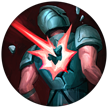
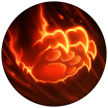

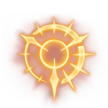
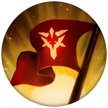
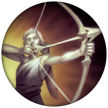
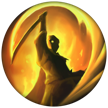
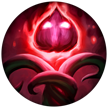






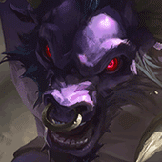
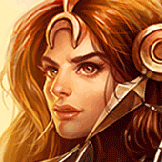
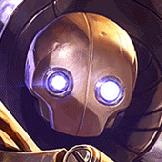
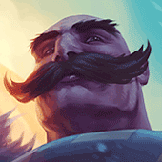
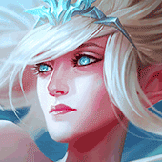
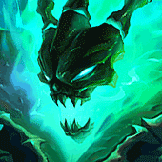
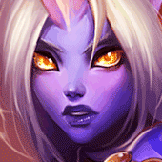
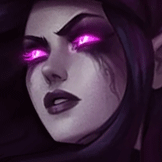
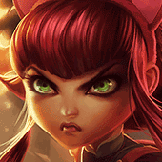
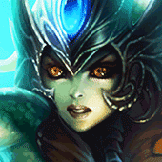

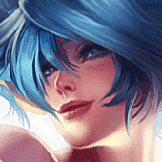
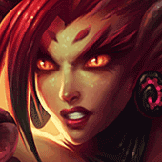
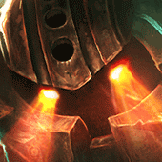
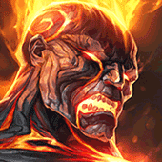
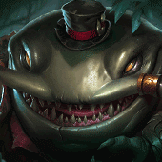
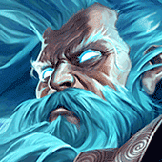
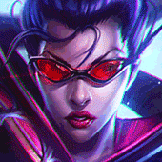
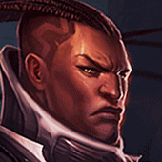
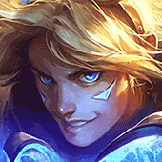
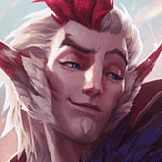
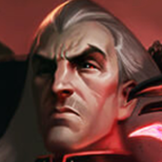










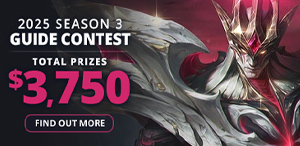

You must be logged in to comment. Please login or register.